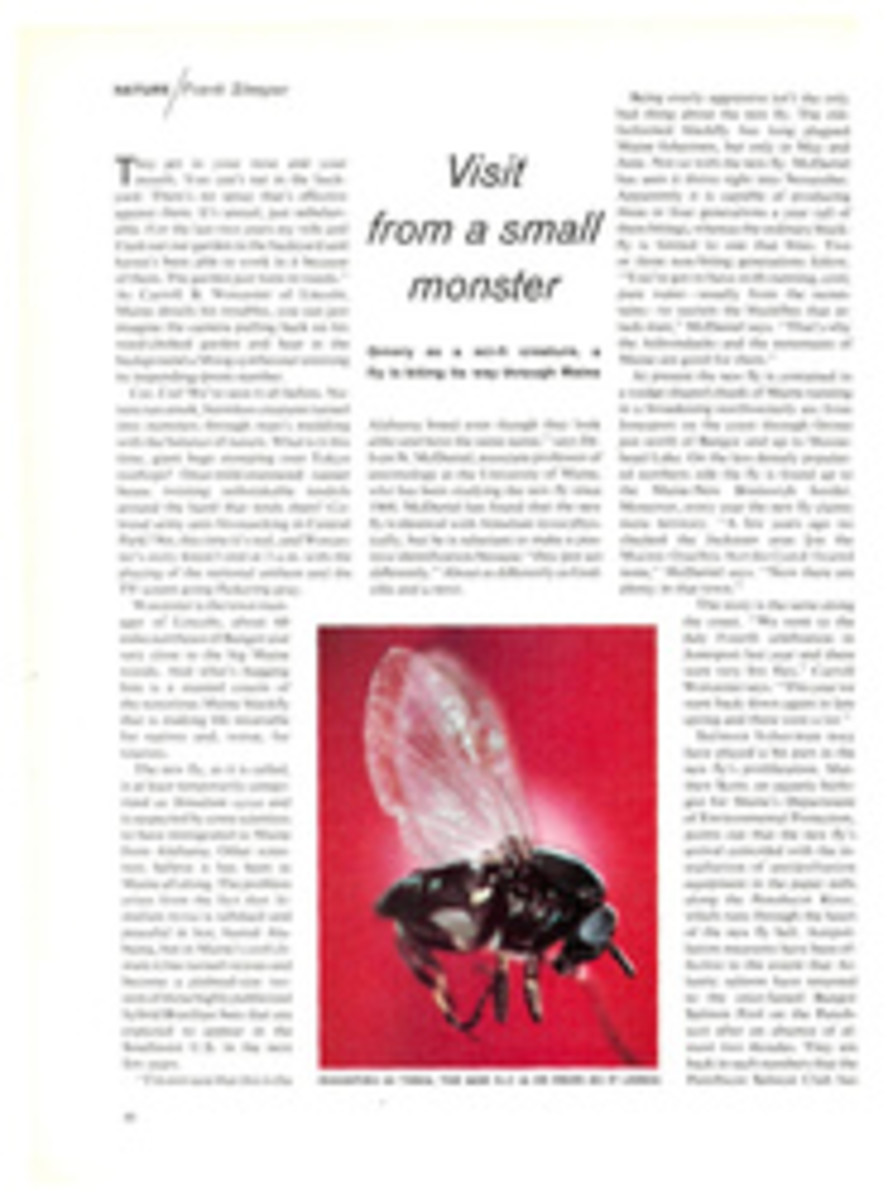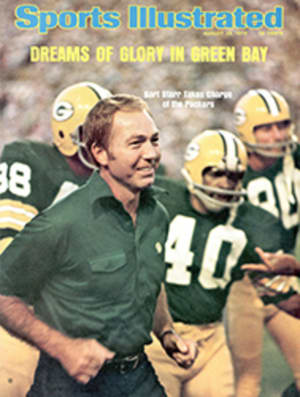
Same old song: 'Football über Alles'
At one point during the NCAA's special convention last week, a woebegone athletic director surfaced above the morass of verbiage (which eventually reached waist level, well over all hotel verbiage safety limits) to implore his colleagues to consider some small amendment. "There are a lot of sportswriters here," he told them, "and they're going to think we're fools." Well, you said it.
The convention, held in the grand ballroom of Chicago's Palmer House beneath seven of Betsy Ross' largest creations, had been urgently convened to deal with the depressed economic situation in which athletic departments find themselves. The results of the meeting were dubious, although so many rose-colored glasses were put on following the proceedings that it seemed as if the Elton John fan club, not the NCAA, had gathered.
The accomplishments were predictable and conservative. The substantive issues were never joined, simply because the NCAA is foremost a lobby for Big Football. And Big Football is not about to give in. This is no surprise, nor is it said harshly. It is just so.
Big Football grudgingly allowed its grants-in-aid to be reduced from 105 to 95 (in a sport the Steelers play rather well with 43 men), thereby saving a few dollars at a handful of institutions that did not want to be cut back in the first place. On the sidelines Arkansas football Coach Frank Broyles explained what a sad state things were in even before the new scholarship limit had been set. "Why, I'm down to 103 already," he groaned. "These boys drop out of school, get injured, get married."
In a grand gesture of false economy, the convention placed oppressive squad limits on a number of smaller sports—tennis, track, volleyball, wrestling, etc. In some cases, fewer athletes will be permitted to travel to matches than are required to make up a full team. The so-called nonrevenue sports had their scholarships reduced 40%, and basketball was chopped 16.6% (18 to 15), while Big Football took its token 9.5% cut.
Other piddling cost reductions included the abolition of laundry money for the athlete-student (which had been $15 a month), the imposition of modest restrictions on recruiting (although all mandatory penalties for violators were voted down) and restrictions in the sizes of coaching staffs (football teams will have to scrape by with nine full-time coaches).
Indeed, the most meaningful step was passage of a resolution that calls for the NCAA to undertake a study. The subject: Should athlete-students receive their scholarships on the basis of need, just as almost all other collegians do? The administration of need scholarships for student-students is well organized, and the Ivy League has employed this policy for years with its athletes without difficulty. But most NCAA members fear there is great potential for recruiting mischief in this idea and previously had refused even to consider it.
The amendment authorizing the study was advanced by Bowling Green President Hollis Moore on behalf of the MidAmerican and North Central conferences. A Mid-American study has indicated that athletic-scholarship costs can be reduced as much as 40% if the need factor is considered. A full report will be presented at the NCAA's next convention, scheduled for January in St. Louis. As a result, the St. Louis conference may well legislate the harsher economies that the Chicago meeting failed to produce.
For one thing, the January session will probably be attended by more college presidents, who are suddenly rediscovering the NCAA as athletic red ink spills across their desks. Only a handful of presidents attended the 1974 NCAA convention; last week, a score or more were on hand. As many as 50 presidents are expected in St. Louis, and a commensurate amount of power is likely to flow from the locker rooms back to the executive chambers, from which it originally came. "It is significant that this need legislation came out of our conference," said Moore, a dapper man in candy-apple-red loafers. "The Mid-American and the Western Athletic are perhaps the only two presidents' conferences in the country. In the others, the presidents have historically delegated too much authority, and they are having a hard time retrieving it."
The presidents were barely visible in Chicago, however, except for a revolutionary named Stephen Horn, head man at Long Beach State. The real power lay with the executives of the athletic conferences, and as the meeting wore on, relentlessly trying to deal with 73 amendments and 108 amendments to the amendments, the conference delegations took on distinct characteristics.
Command clearly rested with the Big Ten-Pacific Eight axis. Although seating was on a first-come, first-served basis, these two groups took positions up front on either side of the aisle. Hardly an eleventh-hour revision passed that was not sponsored by the Big Ten; and the Pacific Eight, stocked with a strikingly high percentage of rich baritones, commandeered the microphones. Far off to one side huddled the Big Eight, put-upon, stubborn, even whining near the end. On the other side was the Southwest Conference, usually emotional, sometimes shrill and, despite its traditional success with X's and O's, apparently incapable of drafting legislation requiring the use of the other 24 letters. And there were the Atlantic Coast Conference, pleasantly efficient and pragmatic in casting its swing votes; the Ivies, bivouacked far in the rear and dismissed by the lot as crazy cousins; and the Southeastern Conference, strangely quiet, even voiceless.
The convention was composed of groups of genial men of disparate self-interest. Compromise, if not the lowest common denominator, had to be pandered to or nothing would have been achieved. Sanity seemed to reside only among the extremists. They were Horn of Long Beach and his lonesome band on the left, and the stalwart Big Eight plainsmen on the right. Both groups were the heavy losers at the convention, although only the Big Eight really had anything to lose.
Facetiously called Robin Hood for his proposal that the NCAA distribute its TV revenues among all football schools, and labeled "a Socialist and Communist" by his Establishment colleagues in less jovial moments, Horn actually resembled a Republican Che Guevara. Sallow and hunched as he walked to the microphone, barbed and expressive once he spoke, he kept referring to the prevailing NCAA philosophy as "Football über Alles." He departed bloody but unbowed, although his plan to limit football squads to (egad!) 65 drew minuscule support, and his TV idea never got off the bench. Horn characterized the convention as a "warmup skirmish" and plans to assemble a phalanx of college presidents for St. Louis.
At the other end of the spectrum was the Big Eight, which fought valiantly at Chicago to preserve the status quo. The Big Eight states have small populations and their schools must spend heavily to attract players from such places as the populous Big Ten states, Texas and California. Feeling beaten on the primary issue of economy, the Big Eight loosed a states' rights rhetoric that was vintage Strom Thurmond, if not, indeed, John C. Calhoun. Cries for conference "autonomy" and charges of NCAA "creeping federalism" filled the hot air.
The Big Eight began its defense in advance of the regular sessions, co-hosting with the SEC a rump meeting of big powers the night before the convention started, but it obtained little support once the balloting began. The crux of the Big Eight's problem is that it is not as diversified as other leagues. It realizes more than 80% of its athletic income from football; no doubt Hershey, Pa. would be just as angry if nationwide chocolate economies were enacted.
The Big Eight commissioner and Mr. Football über Alles, Chuck Neinas, was as harsh in substance, if not in tone, as Horn. "The NCAA is becoming a quasi-federal regulatory agency," he said. "It is eliminating conference options, proceeding with emotionalism in the name of economy. A lot of this legislation has never even been researched."
Those who found favor with the changes believe—or at least hope—that the reductions will produce more competitive equality. But Neinas and a few others think the opposite will happen. "What is being created is a freeze," he said. "The legislation will not hurt Nebraska and Oklahoma in my conference, any more than it will hurt Michigan or Notre Dame. But it will prohibit schools from improving their programs. They've legislated away hope."
J. D. Morgan, the athletic director at powerful UCLA, volunteered the same conclusion. "It doesn't make the least difference what restrictions go through here. Every time they put in a new rule it hurts the schools in the lower-population areas and helps schools like UCLA or USC."
If Horn's TV proposals had passed, a number of the Big Football schools would have pulled out of the NCAA. "And perhaps," he said, "that might be a good thing." Meanwhile, the Big Eight and others of its persuasion want to continue playing Big Football, to suit up legions of recruits without smaller schools butting into their business. To this end, there were numerous appeals from the floor that only those colleges concerned with an issue vote on it. Thus, men such as Horn and Neinas have come around opposite sides of the issue to a meeting of the minds. The NCAA is indeed football above all. Over the long run, the only way for it to survive—economically, administratively and morally—is for the members to acknowledge this reality and figure out a way to isolate Big Football from the rest of the NCAA's concerns, yet keep it in the association. Until then, two things will continue to be damaged: one is football and the other is all the other sports.
PHOTO
STEPHEN HORN PORTRAYED ROBIN HOOD
PHOTO
CHUCK NEINAS PLAYED JOHN C. CALHOUN

